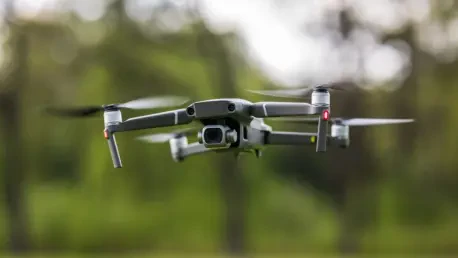A multidisciplinary team of cyber-systems researchers, engineers, optical specialists, and roboticists at Zhejiang University in China has developed a cutting-edge navigation system for quadcopter drones. This system enables drones to autonomously execute precise flight maneuvers, significantly expanding their operational capabilities both indoors and outdoors without human intervention. Documented in the journal Science Robotics, this innovation signals a considerable advancement in drone autonomy.
The key advancement lies in the drones’ ability to perform complex aerobatic maneuvers autonomously. This was achieved by designing a system that defines flights as sequences of aerobatic intentions, enabling drones to respond dynamically to environmental changes. This progress marks a departure from static path planning, facilitating more intricate aerial movements.
The team incorporated a trajectory planner to streamline flight paths and prevent collisions with fixed objects. Upgrades to handle yaw sensitivity were also introduced, ensuring stable flight under varying conditions. The system uses preloaded maps, onboard computing, and real-time visual processing to continuously adjust flight paths, translating topological data into aerial movements.
Validation through simulations and real-world tests confirmed the system’s efficacy. The drones successfully navigated indoor and outdoor environments, handling obstacle courses and performing aerobatic maneuvers autonomously. This development enhances drone capabilities, allowing tasks beyond the line of sight of a remote operator, increasing efficiency, and reducing operational costs.
This innovation represents a significant leap in drone technology. The collaborative effort of the Zhejiang University team highlights a growing trend towards smarter drones with increased autonomy and precision, potentially revolutionizing industries reliant on drone technology. The technological advancements and their practical implications underscore the importance of autonomous capabilities in expanding the real-world applications of drones.









